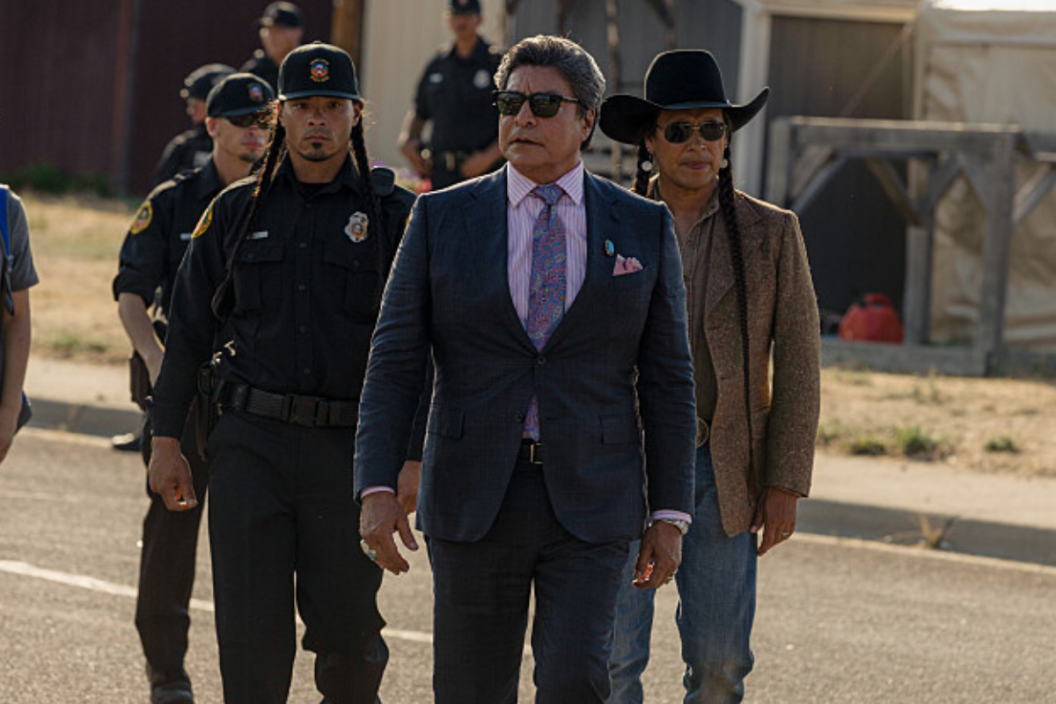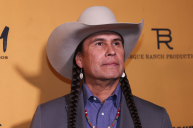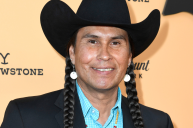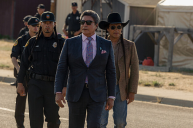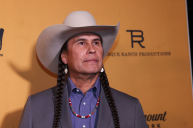Fans of Yellowstone love rooting for the protagonist Dutton family in their constant struggle to maintain their land. Whether the band of cowboys is fighting off greedy land developers or taking on the government and environmentalists, there's no shortage of battles to be waged. The overarching battle, however, is that between John Dutton and his equal rival, Chief Rainwater. Thomas Rainwater is the chairman of the Broken Rock Indian Reservation, and his main goal is to better the lives of his community by reclaiming indigenous land.
Over the course of Yellowstone's five seasons, viewers have gotten a firsthand look at life on a modern-day reservation, including the struggles and accomplishments unique to the land and the culture. Yellowstone creator Taylor Sheridan's primary goal when casting and portraying Native Americans is to make sure they are given an accurate representation as a people and a culture.
Taylor Sheridan and Native American Representation
According to Whiskey Riff, Sheridan believes that Native Americans are poorly represented in pop culture in general. He explained, "I don't think that there is a more misrepresented group in American cinema than the Native American. And what little I can do to correct that historical perspective in fiction, I'm gonna do."
Yellowstone isn't Sheridan's first foray into telling the Native American story. In his 2017 film Wind River, Sheridan focused on the plight of missing and murdered Indigenous women. When it came to production for Yellowstone, Sheridan wanted to keep the Native American scenes as authentic as possible. Sheridan made it a priority that the scenes were shot entirely on a real American Indian reservation, even though it's located several hours from the fictional Dutton ranch.
The Real "Broken Rock" Indian Reservation
The fictional Broken Rock Indian Reservation is actually the Crow Indian Reservation. The reservation, home of the Crow Tribe, is the largest reservation in Montana, spanning about 3,600 square miles. When it came time for filming, Sheridan met with Tribal Chairman Alvin "A.J." Not Afraid about plans for filming. Originally, Not Afraid was hesitant to bring in a cast and crew to depict the life of the modern-day Native American. According to Variety, he thought the show would be the typical cowboy vs. Indian Western, but he was willing to go along if authentic Native American facts were portrayed.
Sheridan took the time to work with local advisory teams to make sure Native American life was portrayed as accurately as possible. Not Afraid said, "How they portray them is a lot more realistic than other shows." Everything from the portrayal of the land to the clothing and cultural experiences helps tell the story of the Native American people. The show's composer had experience working in a Native American musical group and found ways to incorporate instruments into the show's musical score.
Before the show's premiere, Sheridan expressed his appreciation to the Crow Indian Tribe. "Thank you for allowing me to tell a story, to shoot on your land and for all the guidance and advice, thank you very much."
Authentic Casting
To keep the show as authentic as possible, Sheridan made sure to cast Native Americans for the primary roles. Chief Rainwater is played by Gil Birmingham, who is of Comanche heritage. Birmingham has appeared in a ton of TV shows and movies, even working with Sheridan on Wind River and Hell or High Water. Birmingham's character is highly educated and a powerful force in leading the reservation.
Birmingham said about Sheridan, "I think Taylor so brilliantly established a character that's empowered with education and a means by which he can operate within the guidelines of a system that's been structured, and empowered that character to be able to operate and reclaim the resources that have been belonged to him for centuries."
Rainwater's trusted spiritual adviser, Mo, is played by Mo Brings Plenty, who grew up in the Lakota Nation. Plenty brings his experience growing up on a reservation in South Dakota to his role in Yellowstone. Plenty helped plan the vision quest scene that Kayce endures in season 4 and helped on set with prequel series 1923's depiction of the American Indian boarding schools. Although Plenty felt the portrayal of Kayce's vision helped give Natives a chance to share their stories and heritage, not all Native Americans felt the same.
Philimon Wanbli Nunpa, executive director of the Sicangu Lakota Treaty Council on the Rosebud Reservation, opened up to VOA News about the specific scene and how appalled he was that Yellowstone included it on screen.
"The Hanbleceya is a rite of passage ceremony for our young warriors," he explained. "Or when one of our relatives gets sick, someone who is worthy will go on the hill to pray for their healing."
The ceremony entails "crossing into the spirit world," Wanbli Nunpa added. "It's certainly not made for cameras."
Despite others' apprehensions, Plenty told VOA that he, Sheridan and the rest of the Yellowstone crew were careful in how they approached the scene.
"We knew, 'Here's what we can do, and here's what we can't do,'" he said. "We have not given anything away. If you go on Google, you will find a whole lot more about ceremony than what we revealed."
Despite their careful filming, he understands why the scene didn't sit well with others.
"Society forced us to be ashamed of who we are and hide our identities," he added. "It's just sad that today, some of our own are telling us to keep on hiding our identities."
READ MORE: '1923': The Tragic True History of 'Yellowstone' Prequel's American Indian Boarding Schools
